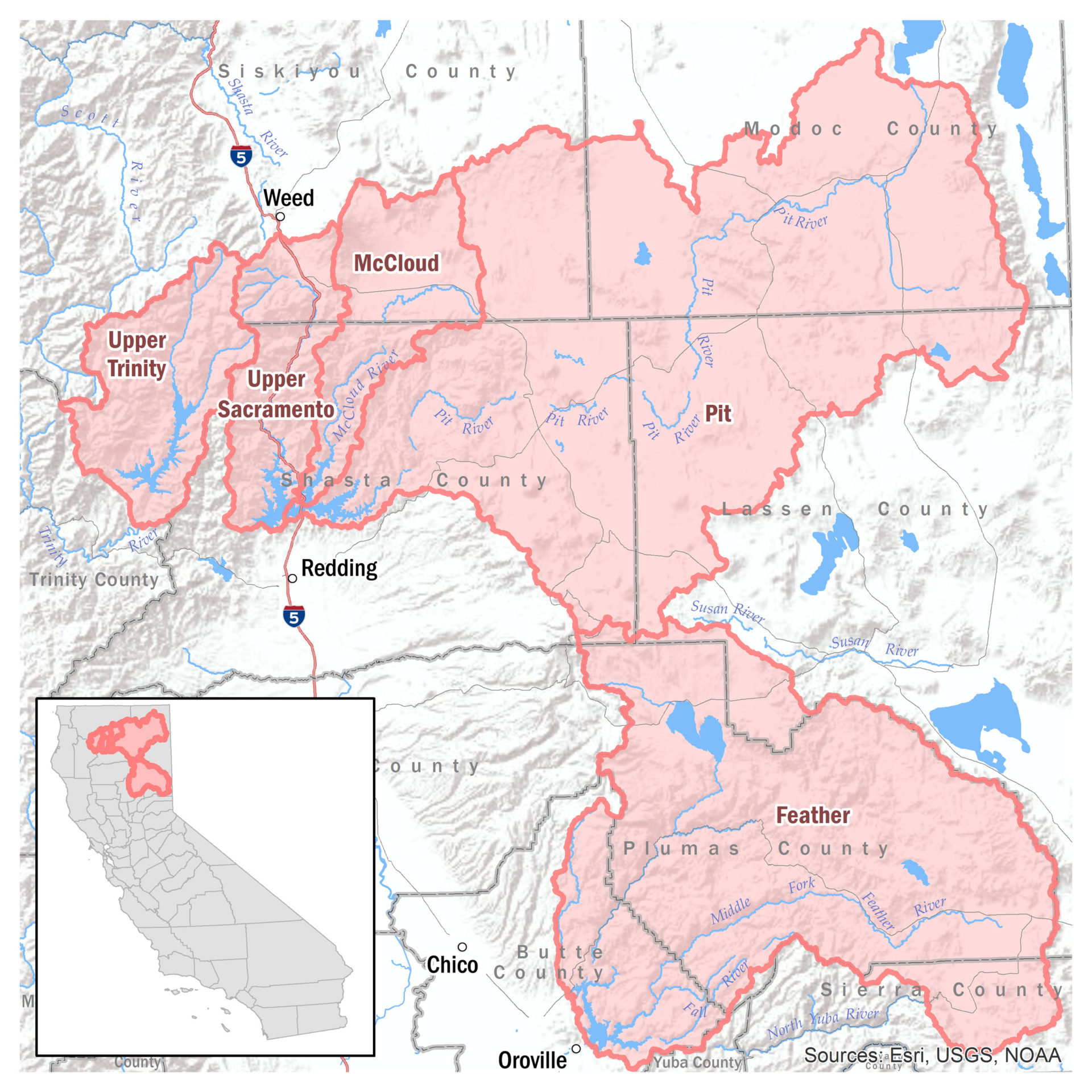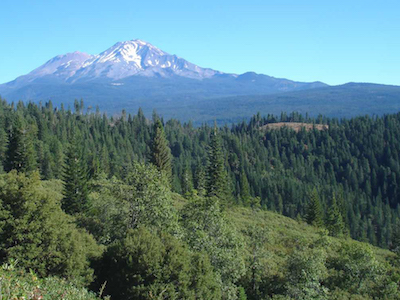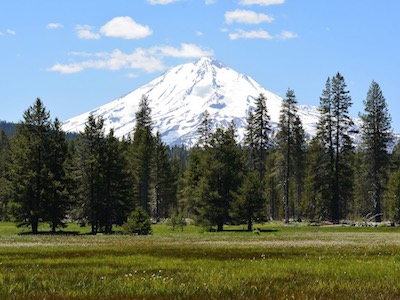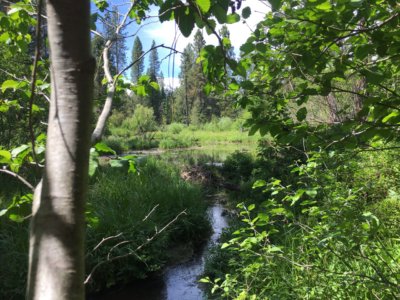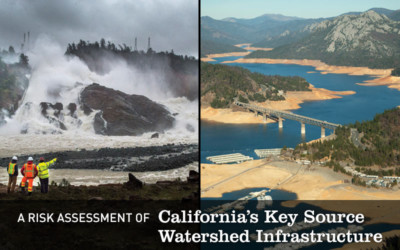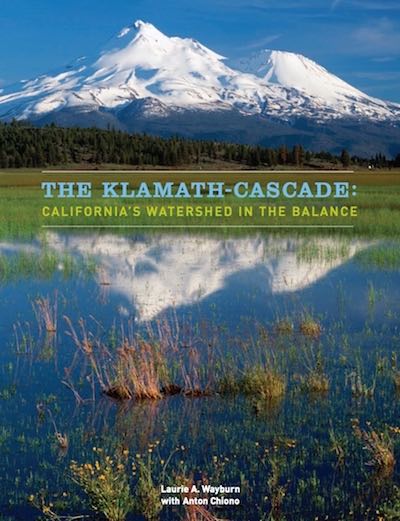Healthy Watersheds California
Pacific Forest Trust is advancing a new approach to permanently safeguard our water supply by restoring California’s key source watersheds.
Water security and supplies are threatened in California and the West. Catastrophic fire, periods of extreme drought alternating with major floods, and a warming climate have created a dangerous landscape for the state’s precious water resources. Water restrictions and competing demands leading to legal battles are becoming common. Even maintaining existing supplies is made more challenging with climate change. Increasing water supplies by conventional means, such as new dams or desalination, is expensive, contentious, and undependable. We are developing a new approach to permanently safeguard our water and increase supplies by restoring and securing our primary source watersheds.
Analysis:
Protecting California’s Wildlife Heritage—Climate Smart Biodiversity Planning
The 7-million-acre Sacramento River Headwaters Region, and its surrounding 3-million- acre buffer zone, has an extraordinarily important role for biodiversity as well as water supply in California. Delineated by three mountain ranges (the northern Sierra, southern Cascade and Klamath-Trinity) it’s varied topography, soils and geology support an extraordinarily wide variety of plants and habitats. The region contains over 80% of California’s natural habitat types and hosts over 60% of its vertebrate species; in fact it is one of 33 globally recognised biodiversity “hot spots”. With such a major role in supporting California’s biodiversity, PFT led a study to see how it would fare under intensifying climate change.
Securing our water at the source.
The vast majority of California’s drinking and irrigated agricultural water—as well as 85% of freshwater to San Francisco Bay—comes from the watersheds that feed the Shasta/Trinity and Oroville reservoirs. Without these watersheds, no amount of infrastructure can guarantee California’s water security. The current conditions and future function of these watersheds are compromised by increased fire, degradation, fragmentation, and development. Current conservation and restoration efforts lack the sustained investment and landscape approach necessary for an effective, lasting solution.
A partnership for water security.
To make significant gains in enduring water security, we need a strategic, integrated, comprehensive landscape approach to restore and protect these key source watersheds. Implementing this strategy in collaboration with both private and public landowners using the best science, restoration, and conservation techniques, we can keep forests intact and healthy and increase water supplies, while also decreasing catastrophic fire risk.
Our proposed approach:
- State funds/finances comprehensive watershed restoration (e.g. forest thinning, road removal, wet meadow, and riparian improvement) and conservation to ensure watershed integrity (permanent working forest conservation agreements that maintain desired conditions on private lands).
- Contracts for work on private lands are issued; bids for federal lands work are let.
- State makes a 15-20 year commitment for strategy, funding, and implementation that results in 75-85% of watersheds restored and maintained in resilient condition.
Pictured above: California’s five key source watersheds, the Feather, Pit, McCloud, Upper Sacramento, and Upper Trinity, feed the Shasta and Oroville reservoirs, the core of the state’s utilized water supply. These watersheds span seven million acres and provide drinking water for over 28 million Californians, including the large majority of the water for the State Water Project.
Water security, naturally.
Research shows that forest restoration can increase water flows from watersheds by 5-20%, decrease flood risks by 25-40%, and extend cold water flows by 2-3 weeks into the hot summer months. Read more in our Risk Assessment.
While each watershed differs in its specific characteristics, overall, a more natural forest structure that mimics the region’s diverse, older, and more complex structure, with a mosaic of meadows, is key to restoring more natural water capture, storage, and release. Here are some of our recommended restoration actions and approaches:

Good forest management helps secure our water supplies.



Natural Systems = Essential Infrastructure
Example 1: New York City
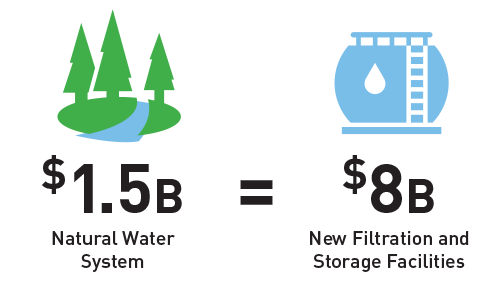
Example 2: Denver
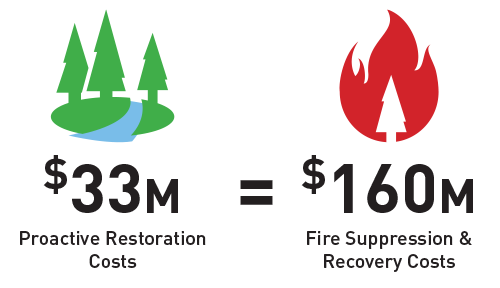
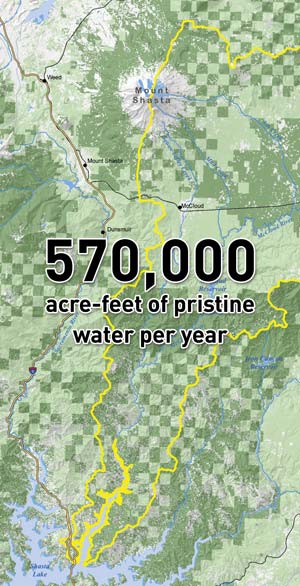
The McCloud Example
The McCloud River has the coldest, cleanest water in California, and is globally recognized for its fishery, biodiversity, and recreation. It hosts some of the most productive forestlands nationally, with sustainable forestry driving the local economy.
A key source watershed, the McCloud River basin provides 10% of the Sacramento River’s water supply. This work would create potential gains of ten to twenty percent additional water supplied, reduce fire risk, and improve resilience.
Working with willing landowners, investments would protect at least 100,000 acres of forested watershed by acquiring working forest conservation easements. Easements are already in place on 44,000 acres or more of the McCloud.
For both public and private forests, investments would target thinning, riparian area restoration, and meadow area restoration. These investments would cost less than $200 million but would result in twice the quantity of water supplied by, for example, a desalinization plant at a fraction of the price.
Help conserve America's forests.
Be part of the Springs for Life® ForestWater Alliance®.
Current Projects & News
Recent Publications
A Risk Assessment of California’s Key Source Watershed Infrastructure
PFT’s report looks upstream to find a cost-effective long-term water solution: repairing & maintaining California’s watersheds.
The Latest from Our Newsroom
Watershed restoration is key to a climate-smart future
Read PFT President Laurie Wayburn’s op-ed in CalMatters from June 21, 2021 about how investing in Sacramento River headwaters region could secure the state’s water supply for decades.
PFT comments on California’s Water Resilience Portfolio
PFT made comments at a public forum for California Water’s Future held by the California Department of Food and Agriculture (CDFA) in Redding, CA on August 6, 2019, and submitted detailed comments on September 1, 2019. Find out more.
A new model for water security in the face of climate change
The health of our forested watersheds is crucial to water security, and the effects of climate change only reinforce that vital role. Here’s what PFT is doing to ensure healthy watersheds and water security in California.

